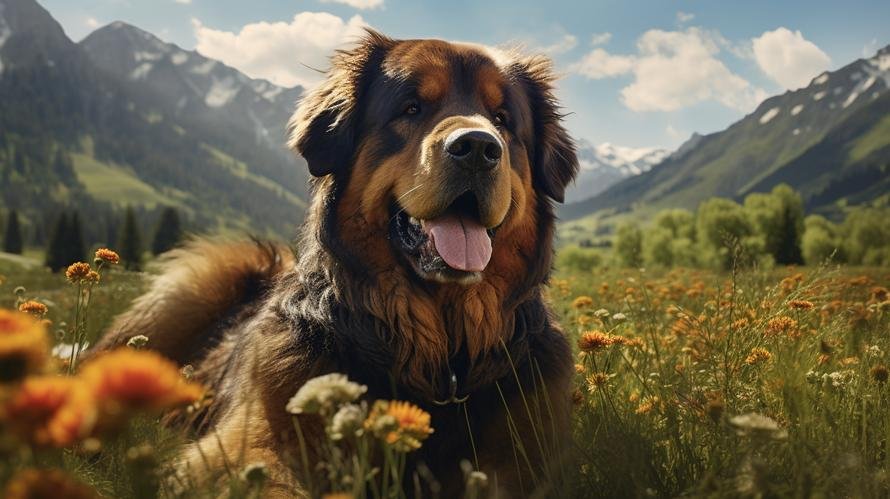It’s a common notion that dogs, just like wolves – their wild ancestors, are meat eaters. However, over centuries of cohabitation with humans, dogs have evolved to consume a more varied diet. What about the Tibetan Mastiff, the wonderful and majestic breed originating in the harsh and cold climes of Tibet? Should they follow the current trend of eating grain-free?
Before we dive into that, let’s get to know this fascinating breed a bit more.
Tibetan Mastiffs, or ‘Dok-Khyi’ as the locals call them, are an ancient breed of dogs and are well-renowned for their fierce loyalty and immense size. While they are aloof with strangers, they share a strong bond with their human families. This breed is known to have a robust health due to their origins which involved living in extreme conditions and sparse food availability.
Now, when it comes to their diet, it’s worth noting that Tibetan Mastiffs have primarily existed on a diet of yak meat, barley, dairy products and perhaps some root vegetables due to their geographical constraints and cultural choices of their human companions. This indicates that their diet was naturally high in animal protein, moderate fat content and some level of starch or grain.
In the recent years, a growing trend in the pet food industry is the rise of grain-free diets. Proponents of the grain-free diet argue that grains are not a natural part of a dog’s diet and their consumption may lead to health problems like allergies, obesity, and digestive issues. They claim that a diet that is higher in protein and lower in grains aligns better with a dog’s natural diet.
Are these claims relevant to our burly friend, the Tibetan Mastiff?
To answer that, we need to consider a few factors such as the dog’s health condition, age, and activity levels. For example, if your Tibetan Mastiff is extremely active, a grain-free diet may be beneficial as higher level of protein promotes muscle development. Or, if a particular Tibetan Mastiff has an allergy or sensitivity towards certain grains, a grain-free diet would be the best course of action.
However, this is not to say that all Tibetan Mastiffs should automatically be on a grain-free diet. While they are certainly carnivores at heart, they are also opportunistic omnivores and are capable of consuming a wide range of food sources, grains included. Grains like brown rice, barley, and oatmeal are good sources of easily digestible carbohydrates, fiber and various essential nutrients. Also, studies have shown that certain dogs on grain-free diets have developed dilated cardiomyopathy (DCM), a serious heart condition. This occurrence, while not fully understood, appears to be related to dogs not getting enough taurine, an essential amino acid present in animal proteins but deficient in grains and legumes.
Nevertheless, it’s crucial when feeding any breed, including Tibetan Mastiffs, to ensure they receive a balanced diet that delivers the necessary nutrients required for their health and wellbeing. This includes a mix of proteins, carbohydrates, fiber, and fats.
Whether you choose to feed your Tibetan Mastiff a grain-free diet or not should depend upon your individual dog’s needs as well as consultations with your veterinarian. Your vet understands your dog’s health the best and can guide you in selecting the ideal diet plan for him.
Feeding your canine companion should never be a one-size-fits-all approach. Every dog, even within the same breed, differs in their dietary and nutritional requirements. While Tibetan Mastiffs have previously thrived on a diet with some grain included, individual mastiffs may very well benefit from a grain-free diet.
To sum up, the decision to feed your Tibetan Mastiff a grain-free diet should be an informed one, keeping in mind their overall health, activity levels, and potential allergies or food sensitivities. Not because it’s trending or sounds exotic. After all, meal times should spell happiness and health for our majestic Tibetan friends.



